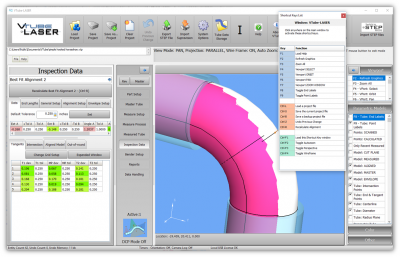Difference between revisions of "Compare UniScan to MultiScan Measurements"
From ATTWiki
(→MultiScan Measurements) |
(→UniScan Measurements) |
||
| Line 25: | Line 25: | ||
</td> | </td> | ||
<td> | <td> | ||
| + | [[image:uniscan.png|500px]] | ||
| + | </td> | ||
</tr> | </tr> | ||
Revision as of 14:18, 28 March 2018
|
Compare UniScan and MultiScan Measurements |
UniScan Measurements
|
UniScan measurements take one group of evenly spaced points over the entire straight. The method use to measure with UniScan is like spray painting. |
MultiScan Measurements
|
MulitScan only measures near the tangents of a straight. (The tangents are the locations on the straights where the straights and bends meet.) |
MTA Measurements
| MTA (Measured Tube Averaging), combined with UniScan measuring, is the the best type of measuring available in VTube-LASER. MTA allows you to measure multiple sides of the same tube, then average the results into a single final tube shape. |
Other Pages
- Back to VTube-LASER


